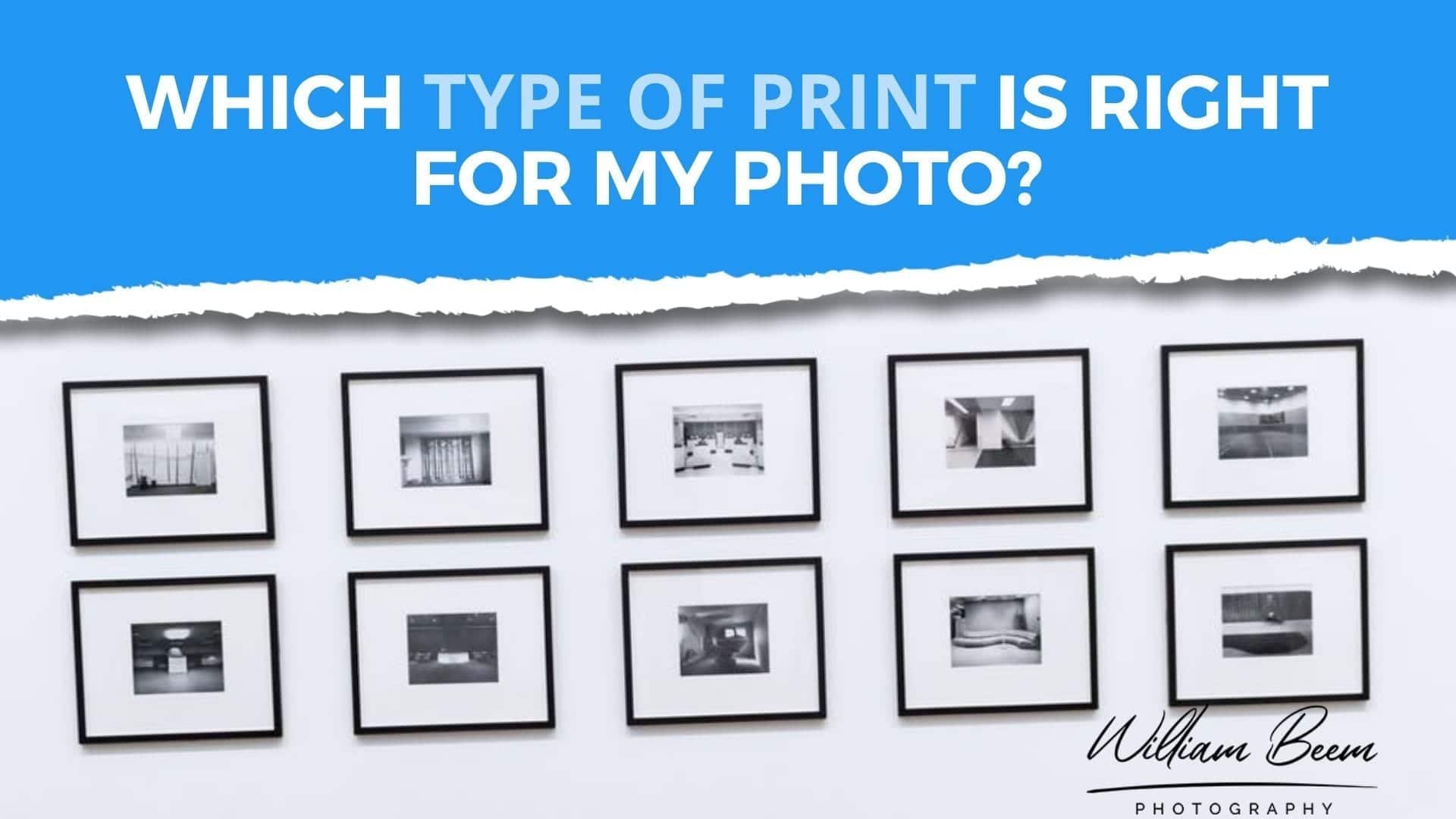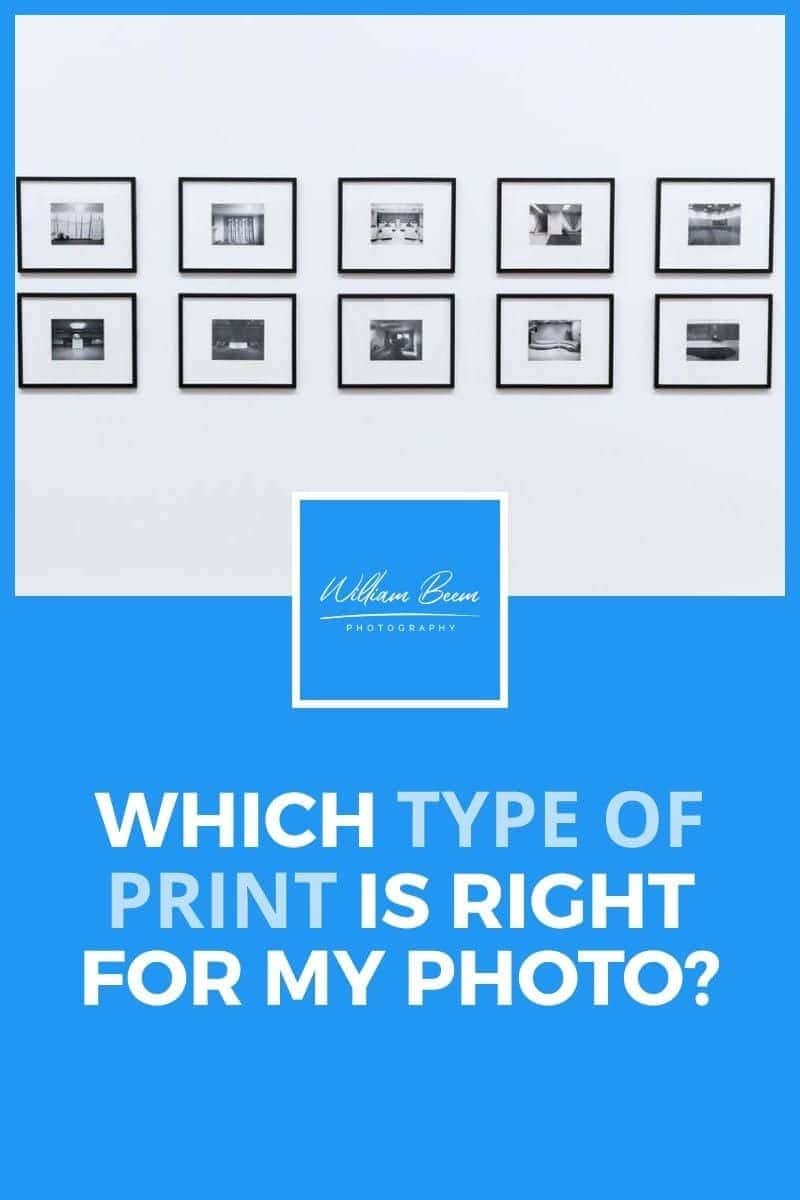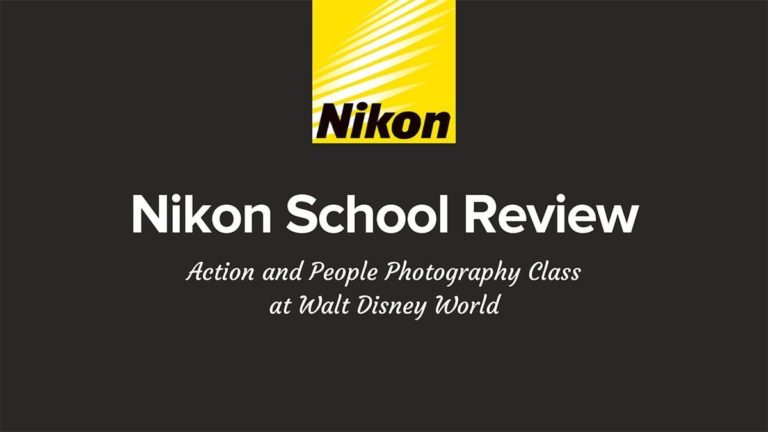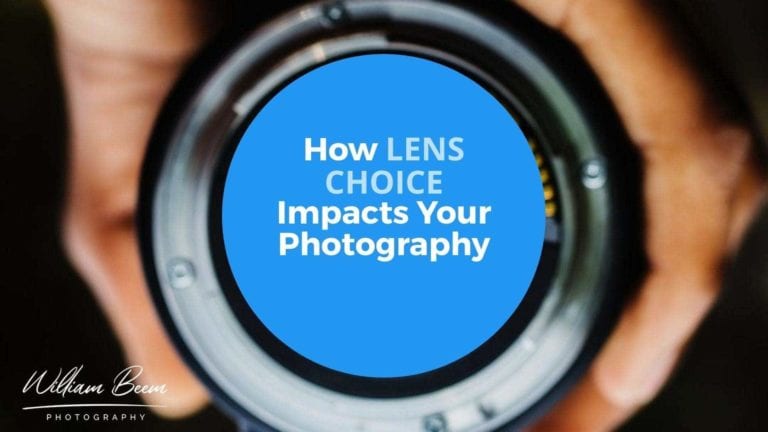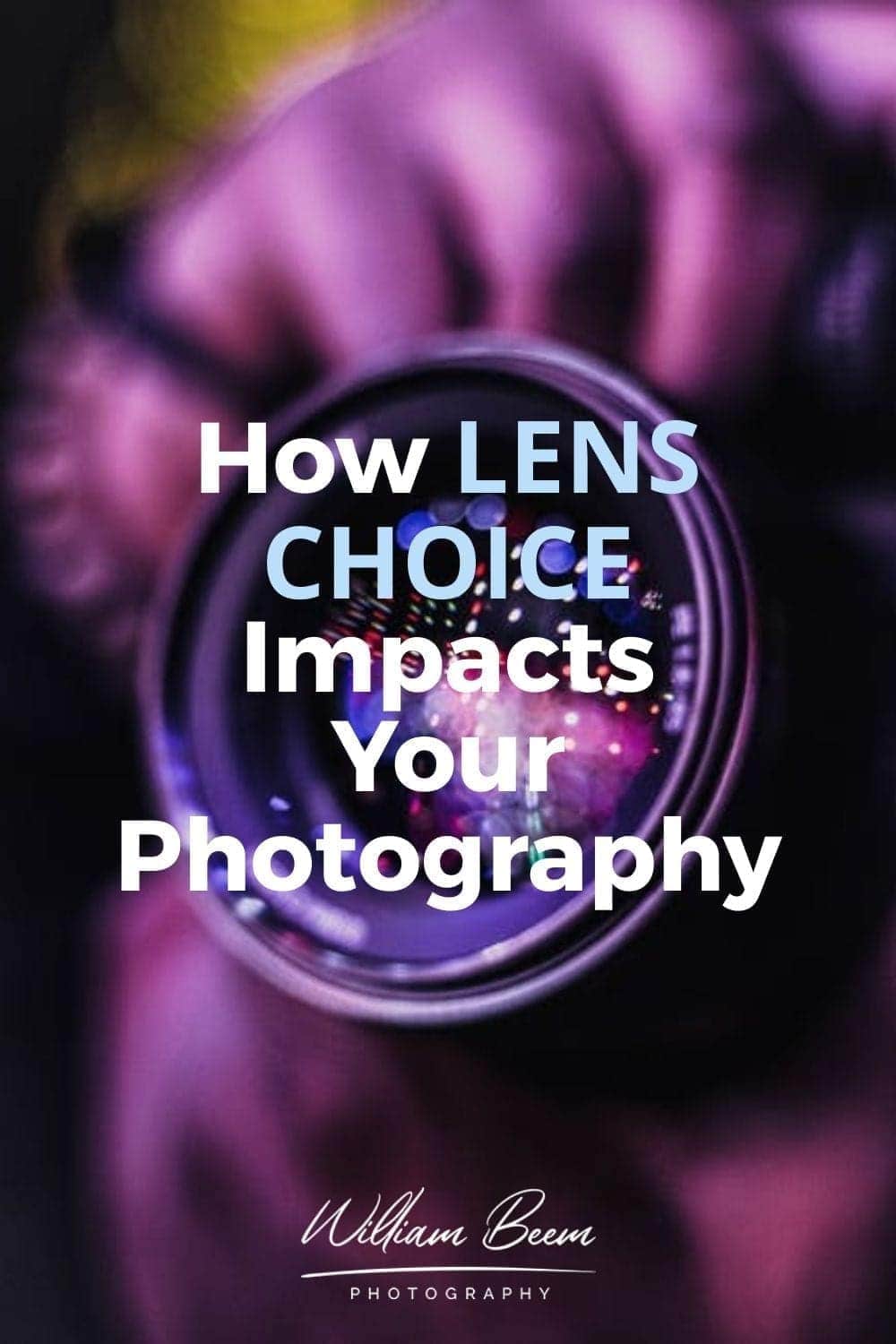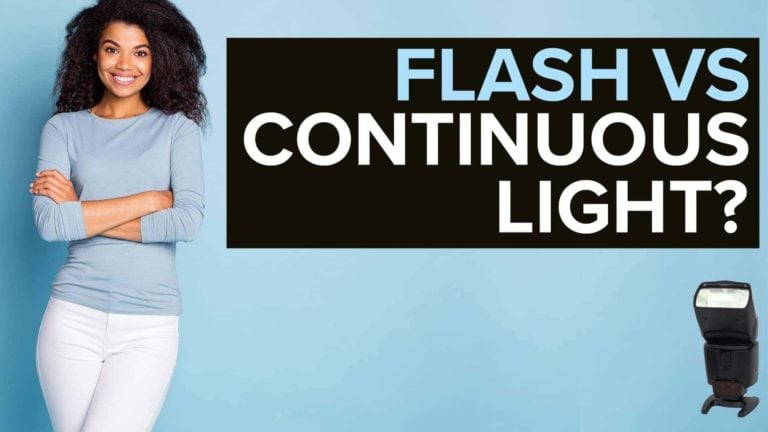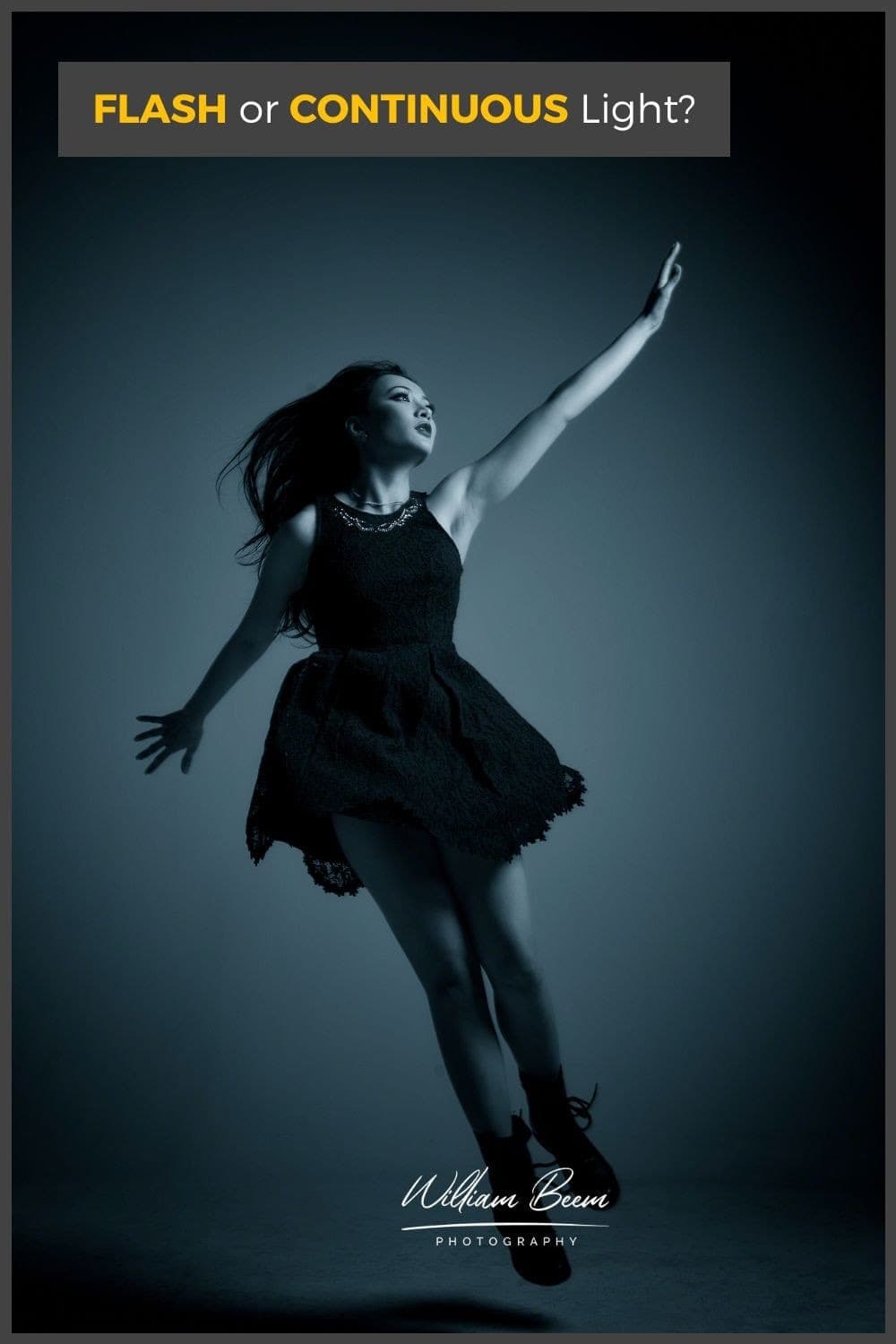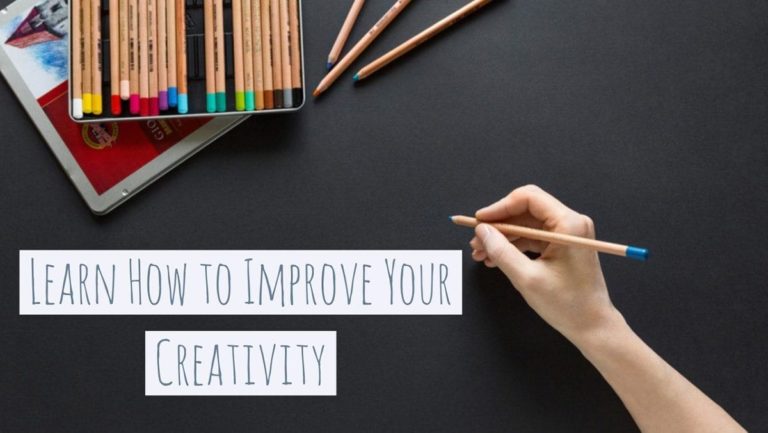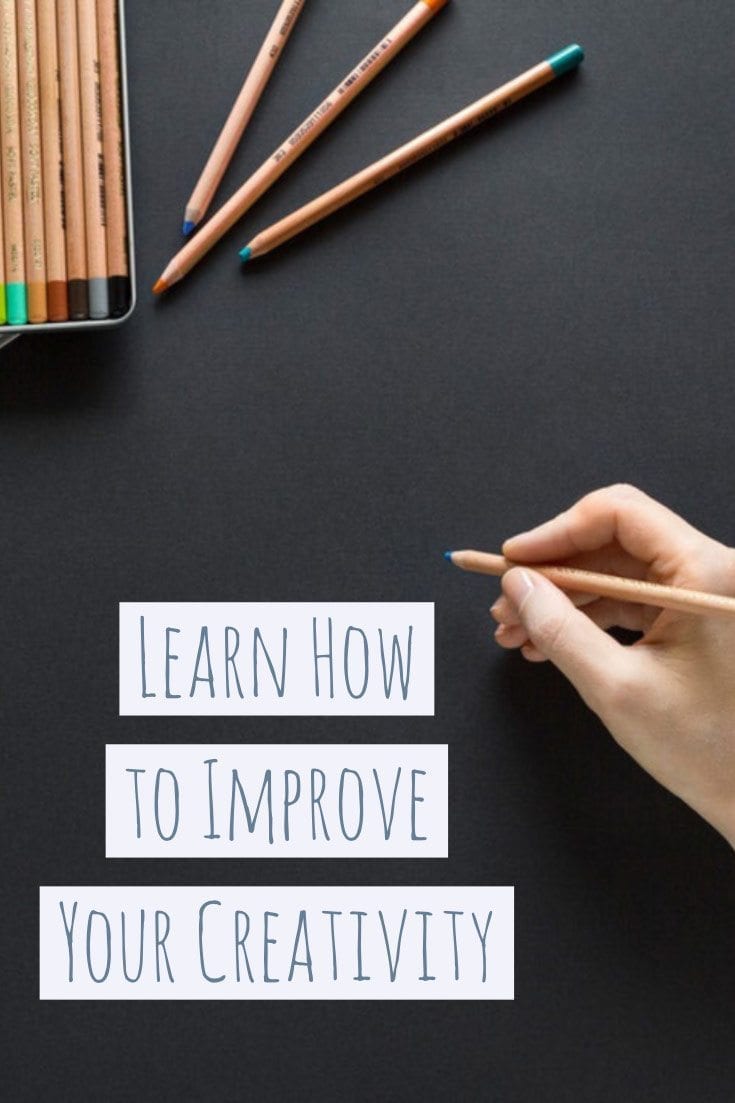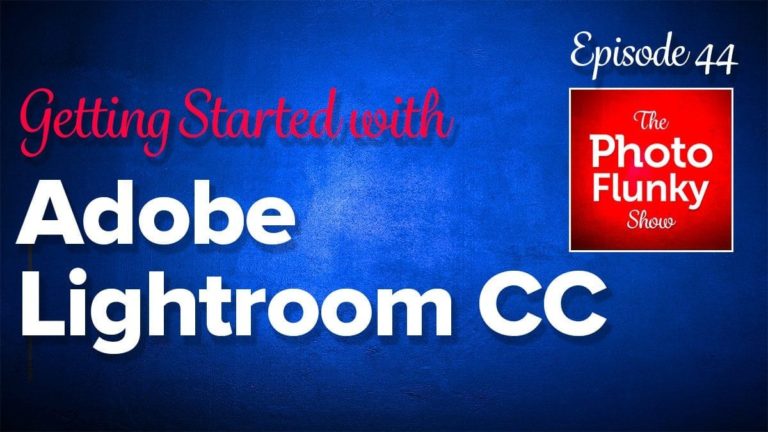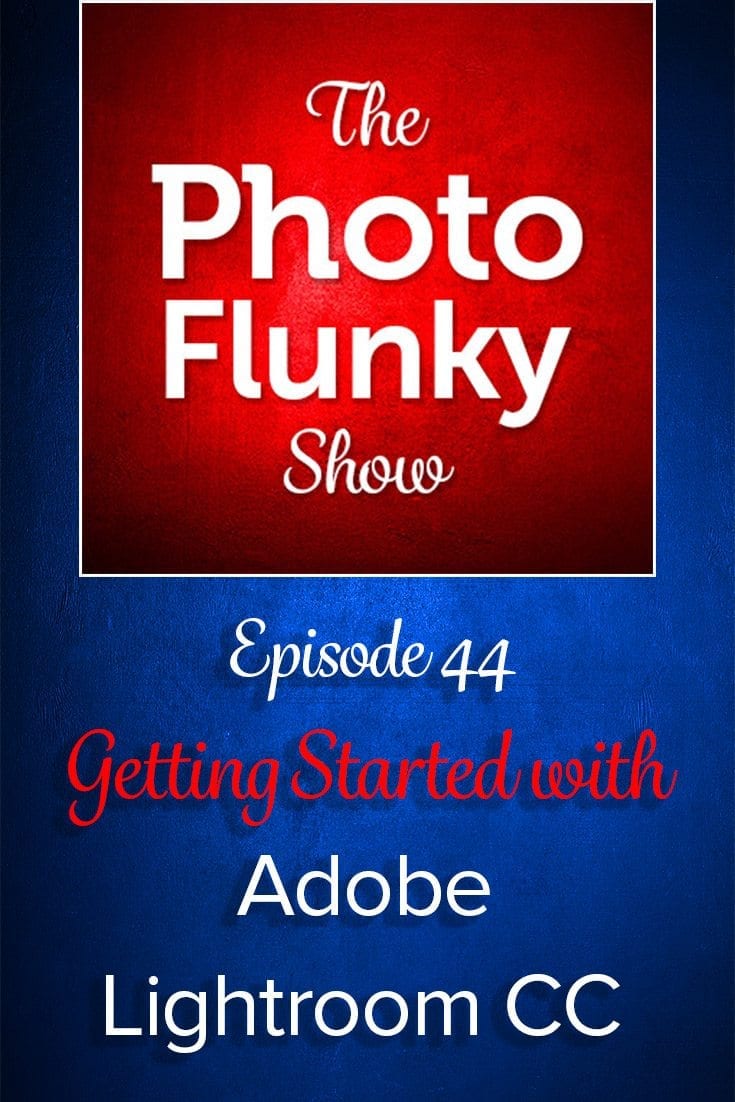Affiliate Disclosure: We earn a commission if you purchase through one of our links at no additional cost to you.
The question isn’t if you should print. It’s which type of print is right for your photo.
Most photographers have thousands of photos in their archives, never seeing the light of day. That’s a shame. I know, because I used to be guilty of leaving my photos ignored in my archives.
My wife, Lee, was really surprised when she moved in and I hardly had any photos on the walls. Worse, I had an aluminum print still sitting in a box that I’d never mounted.
What a waste.
Your photos deserve to be on display so you can live with your art, or sell them to other.
Which Type of Print is Best?
In this episode, we talk about why you should display your photos in print, how to prepare them for print, and then dive into a discussion of the different materials and methods you can use to print your photo.
Quite honestly, there are merits to all of the materials – paper, canvas or metal.
Paper is the most popular, and I think it’s also the most versatile option. Metal and canvas prints tend to go edge to edge, but you can frame or matte your paper prints.
Framing opens a myriad of choices. That’s a good problem to have, though. The type of frame you choose says something about the value you place on the photo inside.
You can also make the frame part of the story of your photo, which just adds to its impact in your office or home.
Check out my article on the Top Ten Ways to Sell More Photos. Rest assured that printing photos is part of that strategy.
Amazing Photos & Amazing Prints
Check out the Related Links below to see some great photos from Lindsay Adler and Reg Garner.
If you’re curious about where to get your prints, I recommend Miller’s Lab & MPIX for paper prints. Artistic Photo Canvas is where I print my canvases and they do outstanding work. ImageWizards is the place to get stunning aluminum prints for your photos.
No affiliate links. Just people and places I respect and recommend.
Time Stamps
A couple of weeks ago, Lee and I did some house painting. Actually, she did the painting and I just watched, but we painted inside. We painted outside. And after we got through with the paint inside, we started wondering, should we be hanging some more photographs on the walls? And that got us thinking about art, which photos we're going to take and how are we going to prepare them?
How are we going to hang them up there? What kind of materials are going to use? And that's what we're going to talk about today on I Like Your Picture. I'm William Beem welcome to, I Like Your Picture. The show that helps you improve your photography with visual storytelling. What is visual storytelling? It's a method of approaching your photography with a knowledge of who you're trying to serve with your photos and what emotion you want to make them feel.
We encourage you to concentrate on your subject, light and background to create a photo. Your audience loves. I'm glad you found us. Hi, I'm William Beem. And today we want to obviously talk about which type of print is right for your photo and also the location where you gonna put it. There are a couple of things we hope to answer for you is like,
do you want to print it home? Or do you want to print with a shop? How do you decide which material to use for your print? Is it going to be on canvas? Is it going to be on paper? Is it going to be on some kind of metal? And how do you prepare for your prints? And the first thing actually,
I really want to talk about is why you may want to just actually print something out and hang it on your wall or give to a friend or even sell, but why prints are important versus just taking photos and sharing them online? Lee you're the master of printing photos. It's not that I'm a master of printing. It's just that I've always liked to pick up touch,
hold, you know, I, I'm kind of a tactile person when it comes to stuff that I like, and I want to be able to put my hands on or get up close to it. And, um, I like having pictures on the wall. I, you know, I prefer reading a book, a real book with pages to an ebook.
If I get the choice, just because I don't know what it is. I guess that's just in my nature with photos. That's, you know, I've said before, I think on this show, when your stuff is sitting on a hard drive somewhere or a pen drive or it's being shared on social media, people look at it and it kind of disappears and gets buried in a feed or an archive or something,
but it's not visible unless you go and search for it, pull it up and display it, putting pictures up in your house or printing something. You're putting a picture onto an item. You know, I know some people do these little photo gifts and things for whatever occasions. There's just something about having a photo that lives with you in the home or in your place of work.
I think there's a presence from an actual print that you never get from a digital photo. I really believe that's true. And I've got an example. I'm actually holding a print in my hand and it's not one of mine. This is actually from Lindsay Adler. It is a fine art print that she said, the title of it is Elena. And it's a medium fine art giclee print.
And it says edition 21 of 200. This came because I purchased a course, her signature lighting course. It's printed on Hahnemuhle photo rag, Baryta. I hope I'm pronouncing this right. 315 with museum quality archival inks by Canon. In other words, this is a print that is made to last. You sometimes you get the photos that are printed and maybe over the years,
they start to fade. This one, you know, for archival print is designed. If you take care of it obviously is designed to last. And it's just a beautiful portrait of a woman, you know, with a red gel background, there's likes a blue gel on her face, and it's a nice, fine art print. And there's something about having this with me rather than just seeing it online.
And it's, it's a lovely photo and it makes an impact. And that's one of the things that I really want is to start doing more with my own photography at home, because we have some that we've printed. Some are travel photos that we've got hanging on the walls. We have our wedding photo that's framed and hanging like as the centerpiece inside of our home,
you know, over the fireplace, there were other things that our daughter she's an artist and she's, she did a sketch of the two of us Lee and myself. These are beautiful memories for us, but they're also works of art. And there's something about have them decorating your home, or even if you have them in an office or whatever location you have,
it says something about you. And it makes a statement to everybody who comes in about what's important to you. That's some personality into the home as well. I mean, even if it's not photos of you and your family, if that's not your style, you may be into travel. But typically the pictures you put up your photos, it's going to be things that you love or things that are part of.
What, what do you deem to be the important aspects of your life? Well, another part, maybe what you think of your community. I've got a friend, his name is Reg Garner and he lives in Sanford, Florida, but his office, you know, his homes or excuse me, his family's business is the Triangle Reprographics. They are in Orlando.
They're a commercial printer and he's sold some of his prints, both to the city of Orlando and the city of Sanford. And he just shared one that he took over Lake Eola, where there's like an, an orange tree close up in the foreground Lake Eola in the middle. If you, if you know the Orlando area, that's kinda like the center central Lake,
and then the skyline of Orlando, which is not very large, you know, in the background. And he just printed that as an extremely large, long, wide photo that went to a conference room in downtown Orlando. He's done some prints for the city of Sanford as well. You know, much larger than what we typically get with two foot by three foot photos that most of the regular shops are printing for us.
So in other words, he's got the equipment and he can do these things. He's making sales. All he's doing is taking nice photographs of places, where he lives in the city, where he works and he's making, you know, contributions to the society there, but also he's, he's making money selling his work. The reason he's selling his work is because of those amazing prints.
I think big format prints also make a big statement. I mentioned that Reg takes things, you know, he prints them extremely large with my old D700. I think the, I was told that the largest it could print was, you know, 24 by 36 inches. That's a 12 megapixel camera, even an old D800 is 36 megapixels can print much larger than that.
And Reg, I think he knows that when you're printing something, that's these extreme sizes, he's got a process that will make that work. And with his camera, he's shooting with a DSLR. The same as the rest of us are. And sometimes he's shooting with a drone. So he's not exactly working with some medium format camera that has extra large resolution to it.
But there are a couple of things that you want to think about when you're going to the print in the first thing is really what size do you want to get? And I'd say for most home and office, I'd say the largest or the most common, large size is going to be 24 by 36. And that's, that's what we have hanging in our home.
I don't know that. Would you want something larger than that in the home? It depends Maybe in a statement on wall? If you get a large Rooms that have higher ceilings, I mean, typically your living areas are, you know, that the room is a lot bigger here from floor to ceiling, than your bedrooms and offices. So I think you need to take that into consideration.
Well, There are some places, you know, if you've got those space in a room where you can have a really large print, I would go for it. I like seeing art as big as possible. Yeah. But I'd say the standard home and standard room 24 by 36, it's kind of where I'm looking at one of mine right now. It fits nicely between one wall and a window that I've got.
And it's, and there's a little bit of room to breathe on either side of it. So it's not taking up too much space, but if you've got a living room or dining room or something like that, we've just got a big space for a wall. It might be worth talking to a commercial printer to see if you've got something that might fill that space.
But I think that's going to be on the extreme edge. Most of us we're probably going to be under or at, or under 24 inches by 36 inches. No, pretty big in a dining room. If you've got a decent sized dining room table, I think what happens then the reason why a lot of people may not go without is because your costs increase dramatically as you get over that 24 by 36,
But then you could do, you could do the photo, like do three. Yeah. The us that's actually something. Our daughter is she's the painter, I mentioned she was an artist as well. So she's, she's got something that she's working on with the painting of an elephant and she's doing it like the elephant in the center. And then on either side,
you know, part of the jungle, is that what it looks like? So having those three different canvases together fills up more space and makes it a bit more of a statement and you can do the same thing with your photography. Okay. So when you're preparing your photos to print, there's a couple of things you want to look at. You can go wrong.
If you don't pay attention to these things, because what you share online or looking on your screen may not necessarily be what you look at when preparing for print. And one of those things is going to be color saturation. If you print something that is just way oversaturated on the screen, that's going to be exaggerated even more on print. Oh, absolutely.
And different printers use different settings. So that's something that I've learned. You send a batch off here and you send a decide, Oh, I want another copy. And then you find someone else that can do it quicker. And they look completely different. Same files. Here's some things you can do first off. If you have not calibrated your screen,
that's a good thing to do in order to calibrate your screen, you need to have a device. I use something called a ColorMunki, which is MUNKI, not like the animal, but you want to calibrate your screen. So in other words, the colors that you're seeing match up to the colors that the printer has. Also, if you're working with a printer,
you want to get something called an ICC profile. So that way, you know, what kind of color space that they're working with, and you can match the color on your screen, to the cold, they're going to be printing off. So in other words, you send the files off with an ICC profile and you're going to get a print back that they kind of looks like the color that you want.
And if you're not sure about what to expect before you go order something big and expensive, a lot of printers. And when I say printers, I'm talking about a print shops, you know, something like Millers or MPIX or a Bay Photo, places like that. They'll probably send you back a sample. In other words, that way you can see how the photo looks or it's going to look before you end up spending money on your big project,
which is a very good idea. So that way, you know what you're going to get before you spend the money on the big one. Sharpness is another issue. Sharpening for screen and sharpening for print are not the same thing. If you're working with Lightroom, you'll see, you know, do I sharpen for screen? Do I sharpen for printing? So you want to adjust your sharpening for printing.
And if you're printing on canvas and you've got something that's not quite as sharp as you'd like it to be, don't worry. You can get away with murder with canvas. It's all the texture on the, um, on the canvas that kind of gives you a lot more forgiveness. Now we mentioned size before. That means you need to think about your size as far as the file that you're sending.
You know, what is the resolution? How many pixels, tall and wide, and also dots per inch, a DPI of 72 is fine for screen. It will be horrible for printing. If you can get, I'd say a minimum of 240 dots per inch, preferably 300 dots per inch to send to your printer. That way the file has enough quality that they can share on the material that you print on and give you a good result back.
It's probably should have been the first one, but what's your budget? Yeah, because there's a huge difference between your 10 cents the printer and your, your, how much do these things go up. So I guess it depends. If you get to, you know, what you're going to do with it, if you had to frame it, or if you use that,
that will certainly add some weight to the price. Well, it's going to depend on some of the other factors we're going to talk about, which is what kind of material are you going to print on and how are you going to frame or matte it? Frames can cost as much as the print itself or more in some cases we found out. Yeah.
Or if you've got old frames that you love and you want to change the pictures. And then this is the thing that I used to do, I would actually print it as you can get it. Sometimes it prints as a poster. That's the category, but you just kind of look for that size, not often what will happen if you measure very carefully,
like the visible aperture dimensions of your screen, it's probably not going to be an exact match to what here, what your options are when you're selecting a size. But I've found that this is, you've got to be careful, obviously what's on the edges of your photo, but I used to get it like maybe an inch, half an inch on one or two of the edges,
you know, bigger. I would actually just trim it. I think we want to talk about that when we get down to framing and matting, but another topic that we wanted to think about before you start printing is, do you want a matte finish or a glossy finish and Lee definitely has an opinion here. Tell us, tell us all about your opinion.
I like a matte finish. Why do you like a matte? Because at glossy finish is the shininess, is it means that if somebody gets a print, somebody touches the photo or something gets on it. It's almost impossible to clean. Whereas the matte finish, I guess like canvas is more forgiving on the surface. You can actually block something up more durable.
Also just think that it's got a nicer quality look. It makes the paper look thicker. Even, you know, even if you choose the same paper for, I think quality, we both tend to prefer matte finishes. I mean, Lee mentioned the part about if some, if you're touching the print and you get thumbprints on it, that's that's horrendous in itself.
I mean, the other part that's my big thing is reflections. If you get something glossy and then the light is reflecting on it, you're not really seeing the image quite right. You're seeing a bright spot where instead of the image. Glossy tends to bring out colors more. In other words, there, it looks a bit richer and more vibrant, but I think a matte finish these days,
I've got matte finishes here. I haven't found a single one that I've regretted. Instead. I wish that were brighter or more colorful or anything like that. I think the matte finishes look fine. And we did the same thing when we were painting our house. You know, we wanted to make sure that we got a matte finish for the house. So that way we can see the colors and appreciate them,
but we don't have problems or issues with reflections, Flares, and glares and all kinds of other things yet. Lee my, my view with printing with glossy, I guess maybe I would find some exceptions if it were not something being displayed on a wall and I don't know what they are, but you know, never say never the thing with photos is,
or any art that's on a wall to be able to see it. You need lights. And if there's a light source, whether it's a window or a, you know, a light in the room, you're going to be sitting in some position where there's going to be some, Yeah. If you're gonna have a hotspot reflection, you're gonna have glare and a hotspot on the photo with,
with glosssy. But that's our opinion. It's, you know, obviously everybody's got their own about what they want to see. And I appreciate that for us. We, we really prefer Matte prints. Yeah. But I think we're weirdos because of people I know of. I don't know anybody other than you, who goes for a matte finish. I'm talking about people.
I personally know when they print, they always want the glossy. And that's a preference. I think a lot of people have grown up with, Oh, glossy prints. Like if something special or extra and they just go with it because it's like, well, everyone gets glossy. And that's a reason enough to get glossy. We've looked at glossy and we've looked at matte and we've made our choice based upon that rather than I think any other influence.
Yeah. So it's, it's I understand. It's like glossy prints. It sounds special. I don't know why glossy is a fancy word, but apparently it is. But I mean, matte, it's like, what kind of you got, have you have glossy? We have matte. Maybe matte needs a different... Matte needs a different name. It needs a marketing campaign,
I guess. Yes. All right. So one of the other things that we want to talk about is, do you want to print at home or do you want to print with a print shop or a printer or someone basically who does this for you commercially? Shop. In the, in my case, it's always been a shop. I understand exactly why some people want to print at home.
There is an art to printing in itself, choosing the paper, choosing the type of ink that's going on your photo. I mean, you make as many decisions, probably with a printer, you know, with your own printer, as you do, trying to think about how you're developing the photo. There's a lot of creativity and there's a lot of things you can do.
If you print for yourself that you may not have as many choices if you are working with a shop. But man, there's a pain in the neck to it as well. First off, if you want to print large, you have to have a large printer. And that means you have to have space for it. You have to buy ink for it.
And let me tell you this. I've heard this on a video I watched a while ago and it said, and I believe this, that printer ink is the most expensive liquid on the planet per ounce. In other words, the most exotic venom from a rare snake that you use to develop medicines from, it's still not as expensive as printer ink by the app.
How does that happen? It's that's why they sell, uh, color printers and, you know, ink printers almost at a loss because they know they're going to get you on the ink. And the ink will clog. The ink will dry up. It's like, unless you're printing regularly, you almost never get all the ink that comes with the cartridge. No,
because the forces, you like your, um, your black is running low and then it stops working and you take the thing out and it's like halfway full, but it won't no matter what you do it won't allow you to use the other half of that cartridge. Now you have to find another one. It's like, what the hell? Yeah. And it's just,
you're gonna use black more than any of the other colors. And if that ones, if this is like a combo cartridge, you're messed up. Now look, some higher end printers will allow you to replace individual colors, you know, by cartridge. And you're probably going to go still go through the black one more often than the others. But these things still,
if you don't use them frequently enough, like I said, they dry out, they get clogged, they become a mess. You've got to do tests, you know, to make sure the inks are spraying correctly. Yes. Just to waste some more. I quite honestly, I don't have the room for something like that. I'm never going to get as big of a print at home is I can get,
you know, through a commercial printer. And there's just the options that are available to me are not worth the cost. The time, the space and expense while I guess cost and expense are the same, it's not worth it to me. I would much rather upload something to Millers or MPIX and get my photo shipped to me, then have to deal with printing and then keep in mind,
once you print, you still have to frame it. You still have to do something with it in order to hang it on the wall. And most people probably aren't printing on canvas at home. They're, someone's probably gonna make me a liar out of that, but maybe there is a nice way to print canvas at home. I don't know how many people are printing on aluminum at home,
but your options are limited. So as you can tell, I'm not really a diehard fan of printing at home. No, but I can totally see how somebody would get into, because I think once you invest in something like that, it becomes an art and craft. It's a skill and it's kind of combining all this stuff. So in my head,
when I think about it, I think, Oh, too much work, but at the same time, I can completely see the draw to it. And I think if you're into having complete control over what you're doing, I mean, maybe you never print large format images. That's not an issue. I'm looking at the back of this print from Lindsey Adler.
Again, this is printed on Hahnemuhle photo rag. And I can't pronounce that BARYTA, I'm going to butcher that, whatever it is, there's a quality to the paper that this is printed on. I don't find Hahnemuhle paper. When I go shopping at MPIX or some of the other places. They may have really nice papers, but he's got like two or three choices of what kind of paper you get.
Whereas if you're printing on your own, you can be very specific. You can buy high end papers. For example, let's say that you're going to a print competition. Like WPPI has, I think a 16 by 20 print competition. There are people who are printers that specialize in creating the prints for that competition. And it's all about the print. So how you print something is as important as how you conceived and captured the photo or post process that the print is.
Everything is what I've been told on the print competitions. And some people want to do that themselves. That's their entry, that's their submission. Or they want to go to someone who specializes in it, I get it. There is an art to printing at home as with any other art. There was a lot of time and expense and things that go with it.
And if you're not committed to doing that, I would say, go with the shop. We've decided in our case, we're going to go with a shop, but now we really come down to what are we going to print on? Do we want paper? And if so, what kind? Are we put on canvas? Are we going to do a metal?
Typically it's an aluminum print. I have a couple of aluminum prints here, and I'm a big fan of, of those. But when I printed our wedding photo, you know, that was clearly on paper. Do you have a preference between those or, and we've got plenty of canvases around here. There's a couple of canvases behind me, as well. Well,
I think the two photos that you chose for the aluminum prints work extremely well, you know, with this type of highly polished finish, our wedding photo is outstanding. I mean, the quality of the print is absolutely outstanding. That works better in a frame. I think there's a, to me, a wedding photo belongs in a good frame. I'm funny,
I've got all these little weird-isms that kind of always explain it, looking at it because it's supposed to be like that. But this is one of them, you know, there's certain things where I wouldn't budge because it just doesn't feel right. Here's something that may come to help answer what material you print on. And that's kind of our next topic is framing and matting.
The aluminum prints are edge to edge. There's no border there's. I mean, the, the photograph covers it literally from one edge, top to bottom, left to right. It looks like a really high polished. It's almost like looking into a TV screen on 4k. It's just, it's just a beautiful finish if you've got a beautiful photograph that goes in there.
But I would say in most cases, I'd print on paper, because that gives me options for framing and also matting if needed. Canvas, I started off printing on canvas and I didn't realize it was because you could get away with anything on canvas. I just thought, okay, canvas looks nice. That's kind of like a texture and feel as you're looking at it.
I think that some people appreciate, but in most cases I would print on paper and that really comes down to how am I going to frame it? And do I want that frame to be right on the edge? Or do I want to have some matting between the frame and the image, Which means you need to buy a frame that you're, that is much bigger than the photo that you're putting inside.
Well, let's take instead of a photo, let's take that sketch that Tové did. We had that matted and framed. Yes. Why? Because it just looked better. I think because it was, you know, as black and white, um, I think it gave it some additional depth. There was additional depth. And I talk about breathing room. In other words,
that negative space before between the artwork and the frame. Yeah. And also that's a good way to enlarge the size of the piece on your wall. If you need to. In other words, if you've got something that's not quite as large as let's say 24 by 36, or maybe you want it to be even larger than that, you matte the thing which takes up some negative space around it,
and then you frame it and the entire piece is much larger than what you have in the center. Well, that's what I was saying about the size. I mean, it changes the size of can also work the other way around. Just be careful if you measure your wall and then decides to have a frame and get the bigger frame for a matte,
suddenly you're working with less space, make sure you still got that breathing room, that little spot you picked as a piece of art. Even choosing the framing. When I did our wedding photo, I went for a traditional kind of gilded frame. I'm glad you like it because if I got that wrong, I would've felt bad, but you know, there are other times I might love to said,
you know what, I want kind of a rustic wooden frame, or maybe you just want a plain black edge. You know, I've, I've got some, some artwork on the wall of my office that has nothing but more than just a black edge frame. It really comes down to, what's the message from the photo. What is the style that you want to share?
What is the location where you're going to share it? When you were putting things in your home before you moved here, what was your choice then? Was it based upon what you could afford or what you wanted to see? Or a combination of them? It was a combination, but it was totally what I could afford. Um, I actually had some beautiful,
very large, um, frames. I mean just heavy, some solid wood frames. And we, you know, with the glass and everything, I went and there was a, like an art store where you could go and have your own mattes cut if you wanted to. Um, I didn't pay anything for them. There were some in the recession in 2008,
2009, when there was like some restaurants and businesses that went out. And I mean, it was kind of sad, but when they were putting things out, sometimes there were these big framed pictures. I mean, the pictures were crappy. It wasn't anything I went to, but I was looking at the frames and I went to ask. I said,
Hey, I know you're putting that out. Can offer you something for them? And they were like, it's going in the trash. If you can take it off our hands, um, help yourself and enjoy. So I went around collecting frames and things and stuck them in the, in the attic. And then I sanded and finished them and did things with them and put the glass back.
And there's always opportunities to find things like that. You may find stuff that people think to them, as trash as junk, you look at it as like, you don't care, what's inside the frame, but you look at the frame itself like, wow, I could do something with that, but the frame sends a message about the content. So for example,
something's not a photograph at all, my college degree. I didn't think a thing of it. You know, I got this thing in the mail and, but my mother and father decided this was important. They had a very ornate frame and they custom framed this thing for me because like I was the first person to graduate college in our family. This was very important that I got something where
I accomplished something that they didn't, it had a great meaning to them. And they wanted to make sure that that got represented. You know, that was a gift to me, that frame says something about the value you place of whatever's inside the picture. Keep that in mind, if you're going to be printing on paper and not just what your subject is,
what does it mean? How important is it to the person who's going to be displaying it. Those are some things that we wanted to share with you to think about, you know, which type of print is right for your photo. If you have any questions or comments on this, please let us know in the show notes. And we'll see you again next week.
Thank you so much for joining us on. I Like Your Picture. This is episode 223. So you can find the show notes available at williambeem.com/episode223. And we would love it. If you'd leave us a comment, tell us what you think about printing. If you have any questions about printing, let us know there. Also, if you have any questions about anything even mine,
you can just go to Williambeem.com/ask, let us know your questions and we'll get an answer back to you. We're hoping to share that out on some, maybe some Facebook live events. Finally, we just want to let you know that we have a way to search our podcast episode. If you go to Williambeem.com, look down the lower right corner.
You'll see a button there with a magnifying glass. Click that a little window pops out and you can search for any term or phrase or something that we've mentioned. And it'll show you which episode we talked about it and click on it. And we'll take you right to the spot where we mentioned it. So thank you so much. We'll see you again next week.

